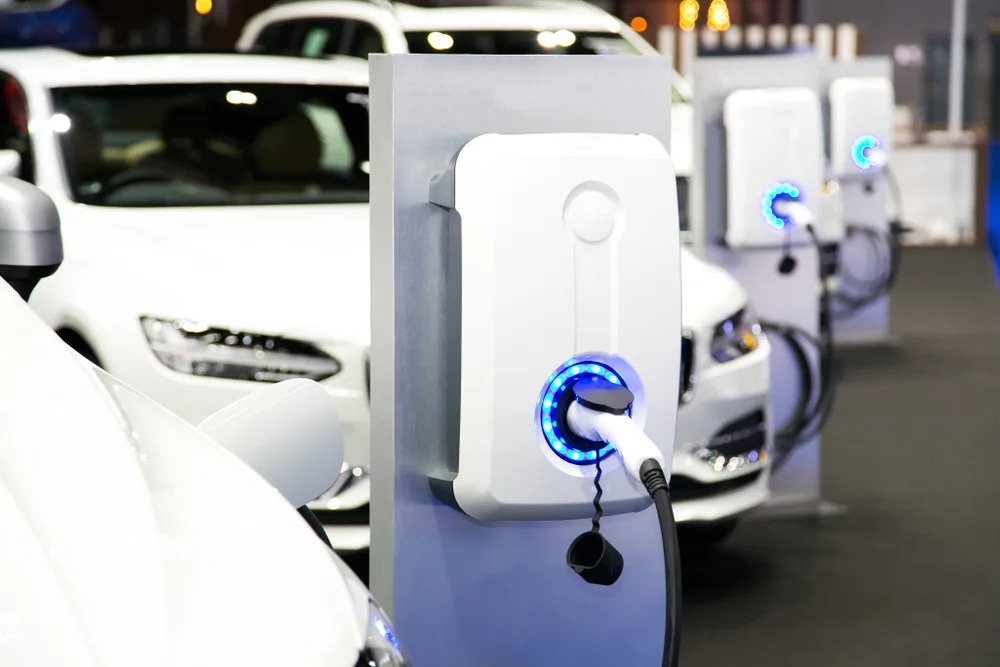
How AI in electric vehicles can transform battery charging
Artificial intelligence (AI) has revolutionised various industries, and the automotive sector is no exception. Electric vehicles (EVs) have gained significant popularity in recent years due to their environmental benefits and technological advancements. However, the efficient charging of EVs remains a challenge. This is where AI in electric vehicles comes into play, offering innovative solutions to improve charging infrastructure and optimise the overall EV experience.
Not so long ago, having AI as a core feature within a car might’ve only been seen in the very top-end range of vehicles, such as Teslas when they initially broke onto the market. These days, all of the major automotive manufacturers are designing and releasing EVs that harness technology for both the vehicle owners, creating a truly modern driving experience, and the environmental implications of reaching net zero and limiting fossil fuel consumption.
The global charging network has been under significant pressure to meet the demands of charging station accessibility for EV owners. Between 2021 and 2022, there was a 55% increase in the number of public charging stations worldwide, and the trend isn’t showing signs of slowing down. In 2023, EV charging remains a critical topic in the automotive sector, with solutions still being developed to further reduce charging times and increase safety, but what role does AI have to play?
AI and Charging Infrastructure
One of the primary applications of AI in electric vehicles is the enhancement of charging infrastructure, i.e. roadside charging stations, charging stations in public places or commercial facilities accessible to the public. Traditional charging stations often suffer from long waiting times and limited availability, and AI can address these issues by analysing real-time data and predicting charging demand. By collecting information such as user preferences, historical charging patterns, and traffic conditions, AI algorithms can determine the most suitable charging station locations and capacities.
Moreover, AI can enable dynamic pricing models for charging stations. By considering factors such as electricity demand, time of day, and grid load, AI algorithms can adjust the charging rates to encourage off-peak charging. This not only helps balance the load on the grid but also incentivizes EV owners to charge their vehicles during periods of lower demand. As a result, AI-driven charging infrastructure can lead to more efficient energy utilisation and reduced electricity costs.
AI and V2G Technology
Vehicle-to-grid (V2G) integration, like much of what we’re discussing here, is a new and exciting technology that is being tested in various locations to determine its feasibility. Virta are just one example of EV charging and energy pioneers continuing to innovate in this area, where they’ve already got functioning V2G charging stations available at their Virta HQ. In the UK, Indra are one of the leading organisations in smart energy technology, who were the first to successfully demonstrate large-scale domestic V2G technology in a real-world project.
The potential environmental benefits of V2G integration is what really stands out due to the capabilities of managing renewable energy demand. While public availability on a mass scale isn’t quite there yet, the technology is evolving quickly and the rise of AI may have positive implications for V2G integration. For example, AI systems are being developed to manage the bi-directional flow of energy between EVs and the grid, ensuring the stability and reliability of the power supply. This opens up new opportunities for EV owners to monetize their vehicles by participating in energy markets, ultimately making EV ownership more economically viable.
Looking Forward
Any topics or technologies involving AI are of course very current and will have questions surrounding them, however 2 relating specifically to EV battery charging are smart grids and autonomous charging. Both of these require further development before becoming real-world solutions, however there are positive signs and AI could be integrated to further boost their progression.
Smart grids are networks that use digital technology to determine the supply and demand of electricity, aiming to ease the transition to clean energy and reduce costs. The IEA have deemed the development of smart grids to require more efforts, as they’re currently not on track to meet the Net Zero Emissions by 2050 Scenario. Integrating AI could prove to be a positive move in the journey towards greater smart grid availability. By analysing real-time data from EVs, charging stations, and the grid, AI has the potential to optimise the charging and discharging schedules of EVs to minimise the impact on a smart grid’s stability.
The autonomous vehicle market still has a long way to go, with public perception remaining hesitant, predominantly over their safety. It is however on the rise, with a steady increase in global market penetration, forecasted to rise from essentially 0% in 2023 upwards to 5% in 2030. Autonomous vehicles use AI models and machine learning to essentially handle all aspects of the driving, from navigation to charging. They’ll be able to determine the optimal charging times and locations, eliminating the need for drivers to manually search for charging infrastructure.
Conclusion
AI-driven solutions offer unique ways to address the challenges associated with EV adoption and long-term development. Accessibility is the name of the game, facilitating EV owners with the necessary charging infrastructure to avoid inconvenience and have access to energy when demand is right. This is where AI in electric vehicles can be of great importance, enabling charging stations to be located and providing owners with the necessary information to help reduce stress on renewable energy sources. At Elmelin, we’re heavily involved with the automotive sector and provide innovative battery insulation solutions for EVs, so we continue to keep up to date with the latest trends and technologies. You can find out more about the work we do in the automotive sector here.
